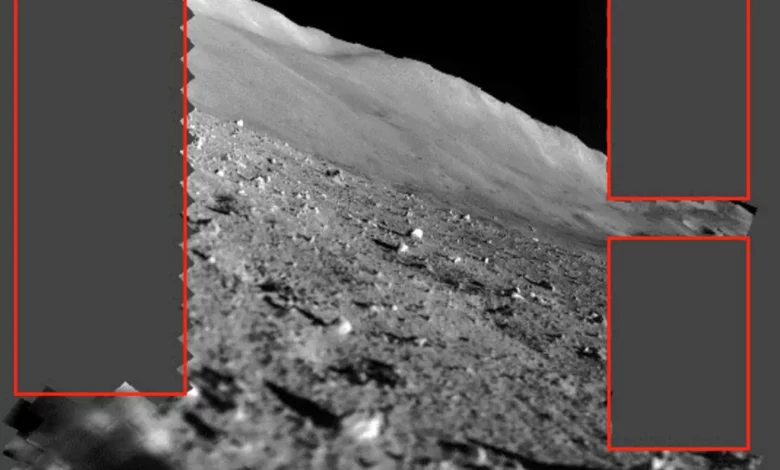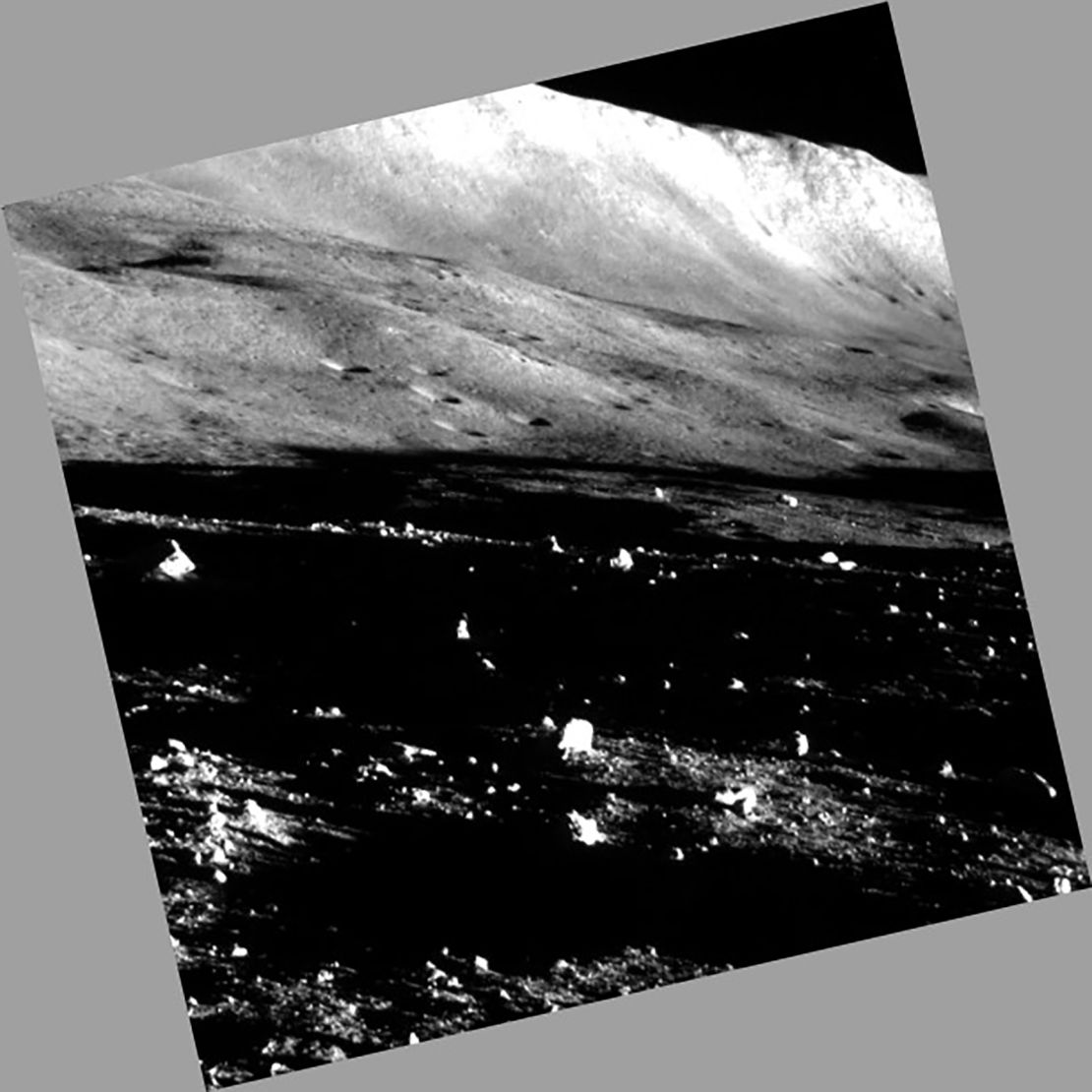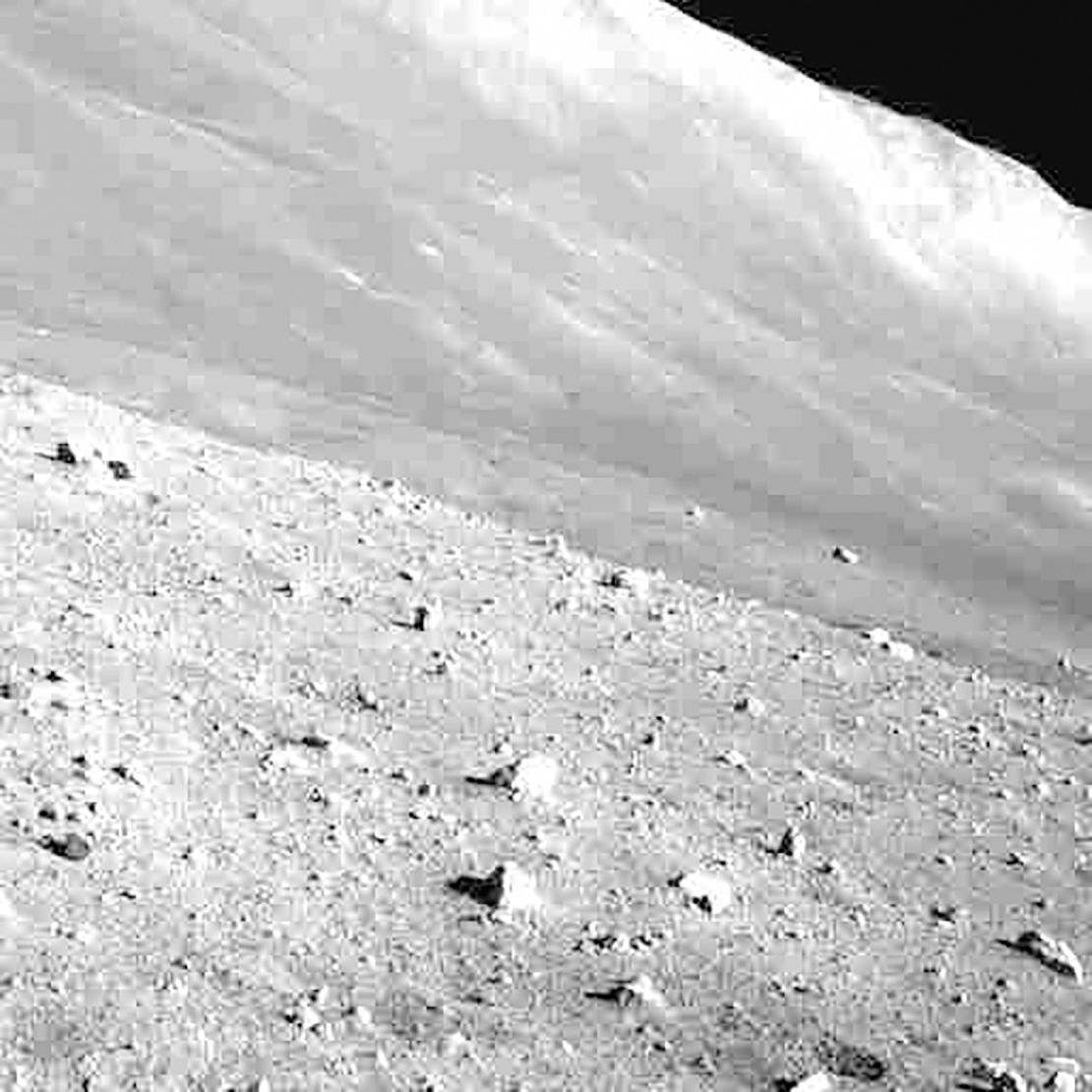
Known as SLIM, or the Smart Lander for Investigating Moon, the robotic vehicle’s touchdown on January 19 made Japan the third country this century — and the fifth ever — to land on the moon.
During descent, however, the spacecraft experienced an anomaly and landed on its nose, which meant its solar panels were facing west rather than upright and not receiving necessary sunlight to generate power.
After just a couple of hours operating on limited battery power, the lander sent back a mosaic image of its landing site before shutting down. Japan’s space agency had hoped light might reach the spacecraft’s solar cells as the sun’s angle on the moon shifted, allowing the vehicle to reawaken.
Sure enough, the Moon Sniper, so named for the precision technology that enabled it to land just 55 meters (165 feet) from its target, woke up 10 days later and began taking new images.
But the spacecraft’s waking hours were short, and on January 31, the Moon Sniper entered what JAXA called a “two week dormancy period during the long lunar night.” Temperatures during the lunar night can plunge to minus 208 degrees Fahrenheit (minus 133 degrees Celsius), according to NASA.
The last scene of the moon from the lander’s perspective before lunar night was shared on X on February 1 once the mission team sent commands to the Moon Sniper and confirmed it was in a dormant state.

The spacecraft wasn’t designed to withstand such temperatures, but the team had said it would try to reestablish communication with the lander again in mid-February.
Meanwhile, a Houston-based company called Intuitive Machines landed their uncrewed IM-1 mission, also called Odysseus, at the lunar south pole, making it the first commercial spacecraft ever to soft-land on the moon and the first US-made vehicle to reach the lunar surface since Apollo 17 in 1972. But like SLIM, the “Odie” mission has experienced a bit of a lunar rollercoaster ride that included having to rely on experimental technology to touch down and ultimately landing on its side.
Over the weekend, the SLIM mission team sent a command to Moon Sniper and received a response, “confirming that the spacecraft has made it through the lunar night and maintained communication capabilities,” JAXA revealed on X, formerly known as Twitter.

“Communication with #SLIM was terminated after a short time, as it was still lunar midday and the temperature of the communication equipment was very high. Preparations are being made to resume operations when instrument temperatures have sufficiently cooled,” the agency shared in its post on X. “Moon nights were cold, but moon days were extremely hot. When we communicated with Earth last night, the temperature of some of our equipment was already over 100 degrees Celsius (212 degrees Fahrenheit). (We) didn’t expect temperatures to be this high, but it’s amazing that space electronics still work!”
Temperatures near the lunar equator can reach a searing 250 degrees Fahrenheit (121 degrees Celsius) during the day. A lunar day can last 29.5306 Earth days, according to NASA.
While the spacecraft was communicating, it captured more images using its navigation camera and the mission team is analyzing the data. Some of the images include areas that weren’t visible in previous data returned by the lander.
The team shared that it is “excited about the possibilities for further observations,” but did not say when the lander would resume studying the lunar surface.




